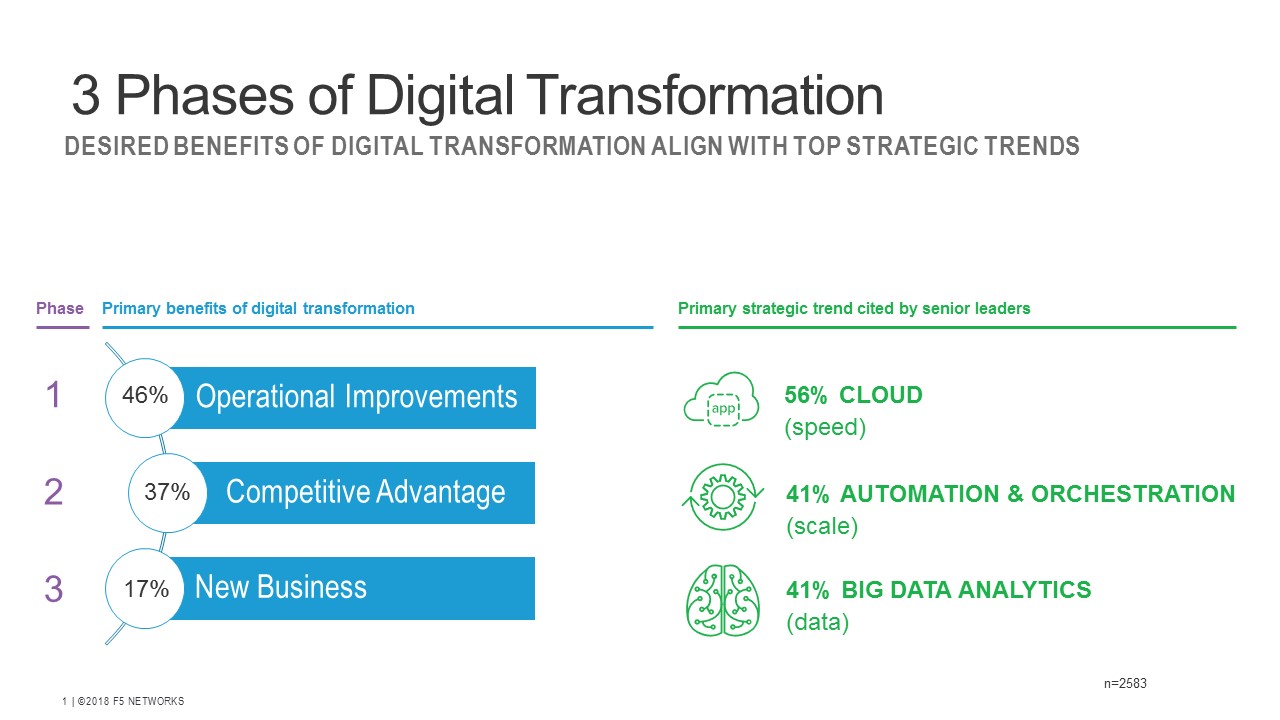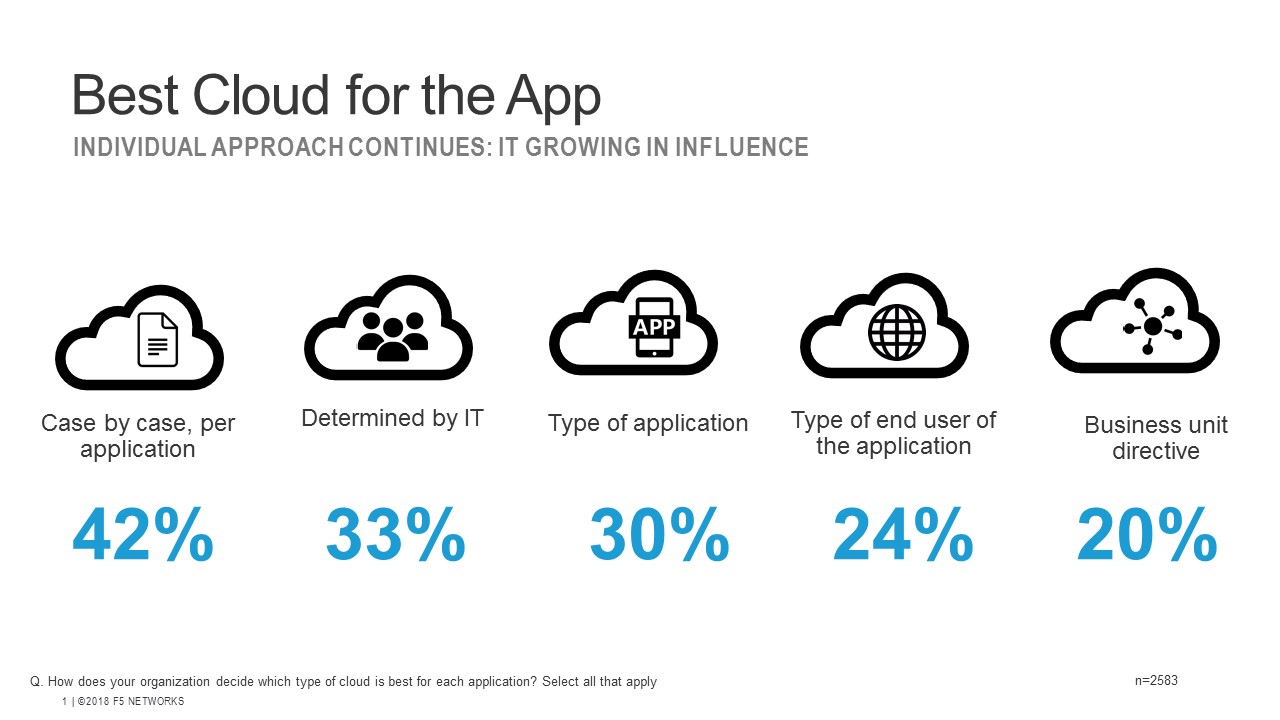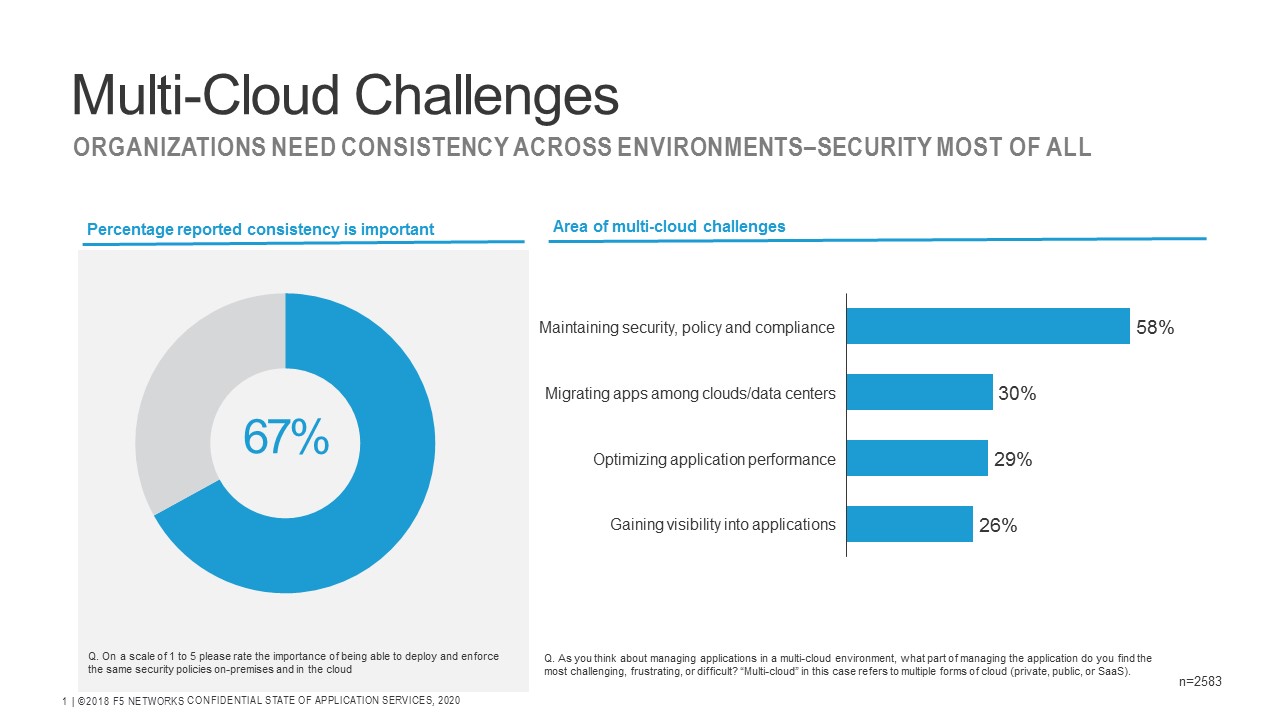2020 年のアプリケーション サービスの状況: クラウドインサイト
すでにご存知のとおり、当社は 2020 年のアプリケーション サービスの現状 (SOAS)レポートを正式にリリースしました。 まだその投稿を読んでいない場合は、ここで読むのをやめて、戻ってきてください。 待っています…さて、戻ってきてくれたので、6 年目となるこの非常に価値のあるレポートをまとめるために尽力してくれた Lori MacVittie と Cindy Borovick に感謝したいと思います。 このレポートは単に見ていて楽しいだけではありません。 これにより、当社のビジョンをお客様とより一致させることができ、州の申請サービスに関する貴重な知識が得られます。
Lori の紹介でご覧になったように、彼女は「クラウド ネイティブ」という用語を何度も使用していますが、私たちは彼女の意味を本当に理解しているでしょうか? 私はほとんどの時間を現場チームや顧客との会話に費やしていますが、聞いた話によると、この用語は人によって意味が異なります。 ある日に 10 人の人に質問したら、10 通りの答えが返ってくることは間違いありません。 ここでレベルを設定することが重要なので、8 月のこの投稿をまだ読んでいない場合は、ぜひ読んでみてください。
米国では予備選挙の季節であり、広告が絶えず流れ、専門家が未来を予測し、さまざまな興味深いデータ解釈が行われている。 視聴していない、または米国在住でない場合は、「だから何?」と思うかもしれません。 この男はなぜ予備選挙について書いているのか? さて、2月3日のアイオワ州党員集会中、私たちの多くにとって身近で大切なことが、いくつかのニュースサイクルを巻き起こしました。それは、ある申請書と、その申請の失敗がどのようにしてプロセス全体を混乱に陥れたかです。 アプリを使用する目的は、効率性を高め、党員集会の結果を迅速に取得し、ユーザーベースにより効果的にサービスを提供することでした。 聞き覚えがありますか? これには、アプリ自体だけでなく、堅牢なアプリケーション サービスも必要です。
ここで再び SOAS の話に戻ります。 このレポートでは、組織が特定の選択をどのように、そしてなぜ行っているのかを舞台裏で紹介します。 確かなことは、デジタル変革が起こっており(実際、調査対象の組織の 80% で起こっています)、それが加速しているということです。 デジタル変革におけるお客様の目標の 1 つは運用の改善であり、クラウドに関しては私にとって特に興味深い点です。 アイオワ州民主党に起きた結果は、マスコミや評論家の影響を除けば、企業の世界ではよくあることだ。 では、なぜ圧倒的多数の企業でデジタル変革が起こっているのか、という疑問が生じます。
洞察#1: 雲とスピード
大きな要素の一つは速度です。 企業は、より迅速に革新を起こし、新しい方法で顧客と迅速に関わろうと必死になっています。 運用の改善を推進することが最も重要になり、それがクラウドの導入を推進することになります。 これが私の最初の洞察につながります。 顧客の 56% がスピードのためにクラウドを選択しています。 テクノロジーやアーキテクチャの選択は、ビジネス成果に合わせて行う必要があります。そうしないと、ビジネスではなく履歴書を作成するための設計になってしまうリスクがあります。 運用効率がクラウド導入の原動力であると理解した場合、設計は変わりますか? クラウドネイティブは、Lori の投稿のような意味になりますか?
速度のためにクラウドを選択しました。次に、クラウド プラットフォームを選択する必要があります。 ご存知のとおり、選択肢は豊富にありますが、大多数の顧客 (レポートの調査対象者の 87%) が、マルチクラウドが採用している戦略であると述べています。 なぜ?
洞察#2: クラウドとアプリ
クラウド プロバイダーの選択方法を見ると、その理由の 1 つが明らかになります。 調査回答者によると、42% がアプリケーションごとにクラウドを選択し、30% がアプリケーションの種類に基づいてクラウドを選択しています。 これは理にかなっており、おそらく今後も続くでしょう。なぜなら、特定のクラウドは特定のサービスをより良く実行できるからです。 「クラウドネイティブ」と同様に、クラウド自体も幅広い用語であり、より深い調査が必要です。 成果、つまりこの場合はアプリをクラウド サービスの機能と一致させることで、運用の改善が促進され、クラウド プロバイダーの機能を活用できるようになるため、チームが行う必要のあるコーディングの量が効率化される可能性があります。
特定の機能に特定のクラウドを選択するという理論は妥当ですが、クラウドの結果が速度である場合、アプリケーションのタイプまたはアプリケーションごとに選択すると、意図しない結果として運用が複雑になる可能性があります。
洞察#3: クラウドと複雑さ
複雑さを軽減することが、顧客が自動化、そしてオーケストレーションに目を向ける主な理由です。 A&O は、クラウドによる規模の経済の実現に不可欠な要素であり、デジタル変革を推進する組織にとっての戦略的重要性を高めます。 しかし、1 つのパブリック クラウドのみで運用している組織はわずか (わずか 11%) であり、大部分 (51%) は 2 ~ 6 つの異なるパブリック クラウドで運用しています。 ほとんどの人(約 80%)にとって、これは課題を意味します。 では、調査回答者は、マルチクラウドへの移行に関して主に何を懸念しているのでしょうか? 回答者の 67% が、セキュリティ ポリシーの一貫性が重要であると回答しており、これはマルチクラウドでのアプリケーション管理の課題という 2 番目の質問と一致しています。
来年の調査で注目すべきもう 1 つのポイントは、アプリケーションの可視性の必要性です。 こうした話題はますます多く聞かれるようになり、来年にかけて、マルチクラウドに関する懸念事項の中で優先順位が上がるだろうと私は考えています。 実際のところ、目に見えないもの(または測定できないもの)を管理したり保護したりすることはできません。
それで、私たちはどうなるのでしょうか? クラウド ネイティブは、依然として多くの定義を持つ用語ですが、特定のテクノロジーではなく、方法論とアプローチと考えることができます。 そして、それを組織にしっかりと浸透させることの重要性は、いくら強調してもし過ぎることはありません。 デジタル変革に携わるチームや個人にとっての優先事項は、ビジネス成果について合意し理解し、それを活用して技術設計やソリューションを策定することです。 定期的に立ち止まって、「X はどのようにして特定のビジネス成果を促進するのか」という質問を自分に問いかけることを恐れないでください。 結果が出ない場合は、成果を出すための軌道に戻るためにどのような緩和策を講じることができるかをよく理解しておく必要があります。 今日のテクノロジーには選択肢が溢れており、それらの選択の結果と下流への影響を理解することは必須です。 アイオワ州の党員集会が私たちに思い出させたことの一つは、プロセスのデジタル化を通じてテクノロジーとビジネス成果を緊密に統合することが、デジタル変革の真の目的であるということです。 テクノロジーの目的を見失うと、結果として混乱が生じる可能性があります。



